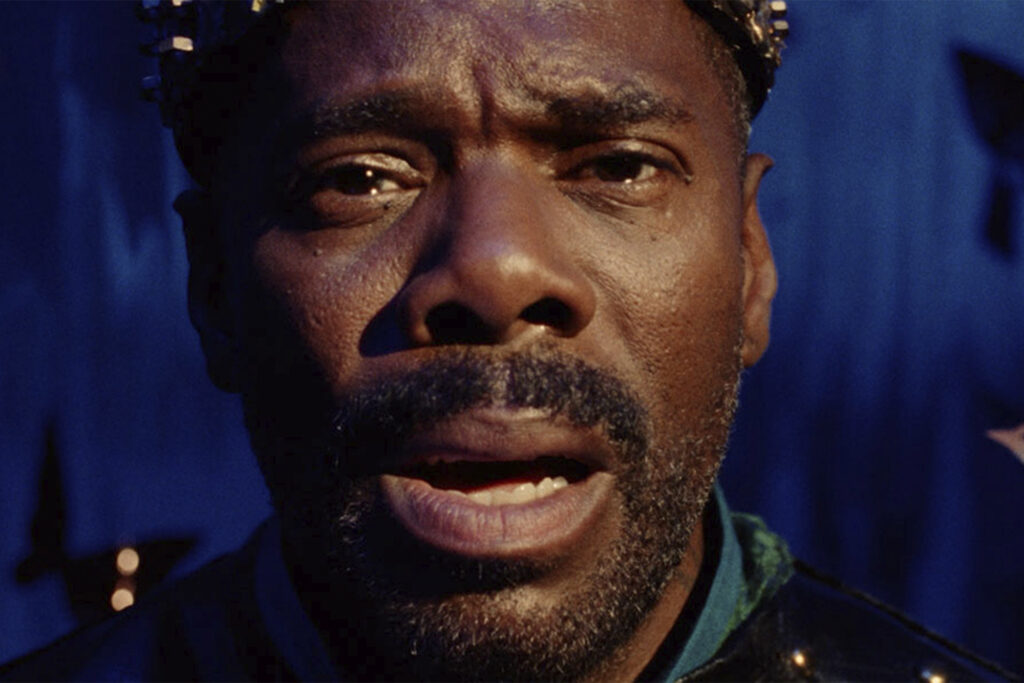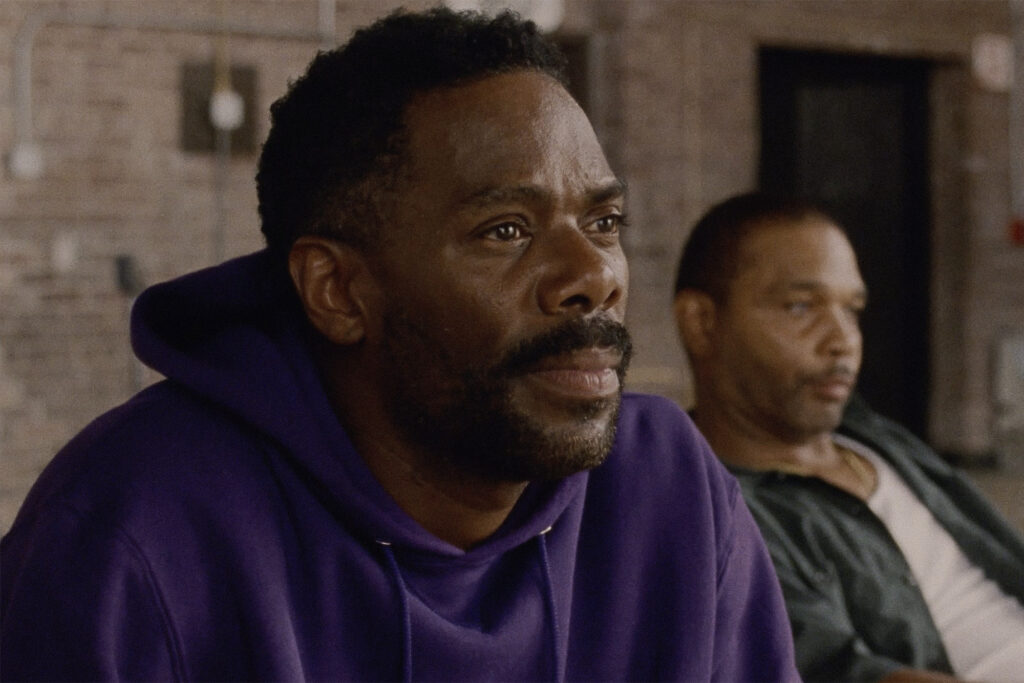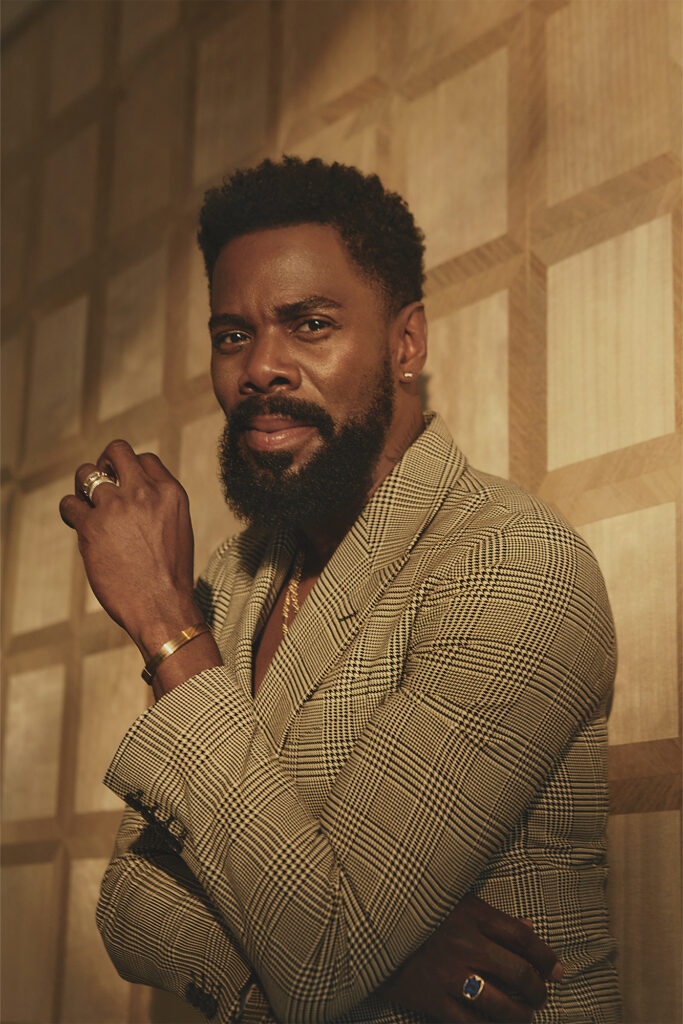Colman Domingo on ‘Sing Sing’: ‘Art Has Saved My Life’
Domingo says his new film 'liberated' him as an actor and producer.
The post Colman Domingo on ‘Sing Sing’: ‘Art Has Saved My Life’ appeared first on Sharp Magazine.
When Colman Domingo sings, he sings. I don’t mean that just literally, but metaphorically too. He’s one of those transformative actors who possess the grace, grit, and gravitas to compel in any skin he slips into. Off-screen, he’s just as magnetic — working the room and charming critics, execs, and the industry folks with his demeanour.
Domingo has been in the industry for over three decades, doing theatre and film that serves his desire to create art. Recently, he’s been everywhere: the Oprah Winfrey produced film The Color Purple, Netflix’s Rustin, and Greg Gwedar’s prison-set drama Sing Sing. The latter two films played at TIFF last year, where he also got the TIFF Tribute Performer Award.
As Colman Domingo pops on the screen on a video call from Los Angeles, he’s dressed casual but smart: “I only wore these for SHARP Magazine,” he jokes, taking his shades. Even on Zoom, it’s obvious he shares a love of fashion and how he presents himself.
“I needed more tenderness between Black and brown men. I think the world needs to see us as tender and complex, and having heart and hopes and dreams and being imperfect. I thought, ‘This is what I need. This is what’s useful. This is how we smash tropes.'”
Colman Domingo on making ‘Sing Sing’
Domingo is soulful, not just in his performances, but even in how he articulates his feelings. About art, he says: “If I don’t know anything else, I know that art has saved my life and that is the truth.”
Growing up in West Philadelphia, art was a lifeline for him. “As a person of colour and finding art, I sort of hung on to that art […] It’s a place where I can express something that I couldn’t articulate, and I can find myself in larger images and canvases in the world around me. I can see myself differently.”
We talk about art and creative outlets because that’s exactly what paints the Sing Sing canvas. The film, which releases in theatres Friday, is based on the real-life Rehabilitation Through Arts program founded at Sing Sing Correctional Facility. The film follows a group of incarcerated actors who work on a play as part of a theatre workshop at the prison. Colman plays Divine G, alongside a cast who were mostly alumni of the RTA program.
“I know the power of theatre, and I know the power of art, and that’s why I know that having that in this film is so gorgeous — especially when it comes to men and these institutions that you would not usually pair that with. Men using art to heal, to find tenderness and vulnerability, is a beautiful gift of this film.”
“[Sing Sing] shows how there is even more need for more art — not only in institutions, but art in schools. Many of my colleagues said if they had programs like this, or knew that they had a place to work through feelings, emotions, trauma, early on in their lives, they would have never been here in this institution.”
Colman Domingo
Sing Sing is an authentic, heartrending portrait of incarcerated men who use the transformative power of art to process trauma and heal. As Domingo points out, the film helps unpack our own unconscious bias against those human beings and these institutions.
I spoke with Domingo about playing a real-life person, the power of art in his life, and heard a personal story about his love for fashion.
It’s so nice to see you again after awards season last year. Congratulations on Sing Sing! In the past, you talked about the gift of the characters each character has given you. What was the gift of playing Divine G, especially for you as an artist?
Oh, that’s a great question to start with. I think I’m still downloading what exactly the gift is, because I think the gift is working on me in many ways. I know the impact of what this film could do — to the complexities of another human being, that we may not think that we have anything in common with — and [the film makes us] realize that we have everything in common with him: his wants, his needs, his aspirations, circumstance. I think that’s a gift. I think getting to know my fellow classmates has been a gift.

Also, after working for so long, I feel like I’ve been gifted with another level of performance. We’ve created it in a very open, generous, raw process that is taking my work to a different level, personally, but in a way that I was ready for. Sometimes, where you’re calling on that art to transform you in some way, you don’t even know what sort of shifting me you may need. But here it was.
It was such a hybrid, what we made. It’s a film about making theatre, and then it’s also distilled down to a film about brotherhood. It takes place in a maximum security prison, yet we’re putting on plays that have a lot of light and joy in them, yet, there are dire circumstances. All of that was a gift, and sort of liberated me as an actor and as a producer.
You’ve played historical figures before, but this time you play a real person who was right there with you. What did you want to bring to the role as an artist?
As an artist, the most important thing to do — I think — is to divorce yourself from any responsibility of making it a documentary in any way. This character has to be built, like you build any character. You have your source material looking you right in the face! Laughs.
My source material is not in the book, he’s right there. I can distill and interrogate and find certain attributes of him, but then my job — to help them film an experience — is not an experience of his; I can’t do that. But, what I can do, is communicate that and make something that is very humanistic, very much a theatrical exploration of one human being. I tried to make him an everyman so that everyone will be able to see themselves — or their brother and cousin or their son — in this performance.
So, I couldn’t worry about playing him exactly, because that wasn’t my intention. And I [told] him, I said, ‘You don’t have to take an attribute to view, but I have to fill it in an arc of storytelling.’ That’s my job as somebody who helps transform from being a person to art.
“I can actually look at every image of anything I wore and tell you what the story was, whether it’s working in an obvious way or a subtle way. I can tell you what film I was in and why I chose to wear that.”
Colman Domingo
In one of your interviews, you spoke about the many stigmas and tropes of men of color. How do you think this film shifts the lens on tenderness and vulnerability in that respect?
That was my very intention immediately. I told Greg Gwedar and Clint Bentley [producer], because when I met with them, there wasn’t a draft of a script, there were some ideas. They said, ‘Well, what’s important to you based on these ideas that we have?’ and I said ‘tenderness.’ I said it’s very important. I don’t know if it’s coming off of summers of racial reckoning, or anything that’s going on in the world, but I know that I needed more tenderness between Black and brown men. I think the world needs to see us as tender and complex, and having heart and hopes and dreams and being imperfect. I thought, ‘This is what I need. This is what’s useful. This is how we smash tropes.’
I love that the film is working on the audience at the same time it’s working on itself — it’s doing the work of healing transformation. We’re set up to believe that it’s going to be another prison movie, that we’ve seen it, we know how they’re going to operate. ‘Oh, here’s the part where so and so is going to get stabbed.’ Every time something feels like it’s about to happen, it’s transformed into something else. I think it helps us all unpack our own unconscious bias against those human beings and these institutions.

The film also highlights the power of theatre and acting. This arts program provided a creative outlet and a sense of purpose for the people. How did you reflect on your own growth as an artist and your own creative outlet?
If I don’t know anything else, I know that art has saved my life. And that is the truth, that is not just the statement. As a person of colour finding art, I sort of hung on to that art. Coming from the inner city of West Philadelphia, where art was a lifeline, it was a place where I can express something that I couldn’t articulate and I can find myself in larger images and canvases in the world around me. I can see myself differently.
I think that’s part of my own human growth and evolution, is that art did that for me. I think, ‘what a beautiful gift that my career takes care of me.’ So, I know the power of theatre, and I know the power of art, and that’s why I know that having that in this film is so gorgeous — especially when it comes to men and these institutions that you would not usually pair that with. Men using art to heal, to find tenderness and vulnerability, is a beautiful gift of this film. It shows how there is even more need for more art — not only in institutions, but art in schools. Many of my colleagues said if they had programs like this, or knew that they had a place to work through feelings, emotions, trauma, early on in their lives, they would have never been here in this institution.

I want to follow up on what you said about art, because you’ve been doing this for 33 years and you’ve always created your own lane. One of the lines that you’ve said, and I’ve loved, was ‘I know what it’s like to not have, and so I’m going to make sure that I do have and make sure that plate is full.’ So my question is, what is the kind of art that you want to make?
People will get confused on what kind of art moves me, because I’ve been in many historical pieces, many pieces where I’m the villain, or it’s wildly artistic. But the things I create in my production company, Edith Productions, are usually filled with light and joy; they’re usually gonna be meditative, ultimately, very hopeful. I’m a person who likes to have a good time. I like to bring people together, and those stories are all so diverse and they don’t necessarily look like me. To be about me, they don’t have to be centred on an African American man, they don’t have to be centred on a queer man. Hopefully, people see the work that I’m a part of as a producer, the things that I champion as an actor, and how diverse that work is. When they see my work as a producer, they’ll see, ‘Oh, the people that you have in the centre of your films and in plays — they’re all over the map.’
But, at the centre, there are essential questions. I think Tom Stoppard once said, ‘We look at an artist’s work, it starts to take shape, and you see that they’re interested in the same questions again and again.’ Mine are probably essential questions like, ‘what is human? Where is joy? Where’s light? Where’s love?’ They’re very simple questions in my work and other things I want to produce. But it doesn’t look like me most of the time. A lot of times it can, which is good, but I’m not limited in that experience. I would like to tell all different stories.
Thank you for that. And lastly, you are one of the best dressed people (and I’ve told you that before). I know your style is carefully crafted because you enjoy creating the looks. So, how would you describe your own sense of style?
Effortlessly luxurious. At times, feeling like ‘I don’t want to be at the party, but I am the party.’ Laughs. I think personal style is cultivated. I think it comes from being curious. Even with my stylist, if they put me in something that is a bit more attention grabbing, there’s always a story to it for me. It’s always about telling the story. What story am I telling?
I can actually look at every image of anything I wore and tell you what the story was, whether it’s working in an obvious way or a subtle way. I can tell you what film I was in and why I chose to wear that — or what television show, or what I was trying to do in the world.
For the past few years — if anyone notices, I can tell you this; this is just a funny thing to know — I started to wear a lot of white, and I had never worn white before. But I started wearing white, and more and more white, because I thought it’s important to be the light in the room. And, sometimes, in these rooms and these places where it’s complicated, walk in with light and light will come to you.
Sing Sing is in theatres this Friday.
All images courtesy of Elevation Pictures.
The post Colman Domingo on ‘Sing Sing’: ‘Art Has Saved My Life’ appeared first on Sharp Magazine.
